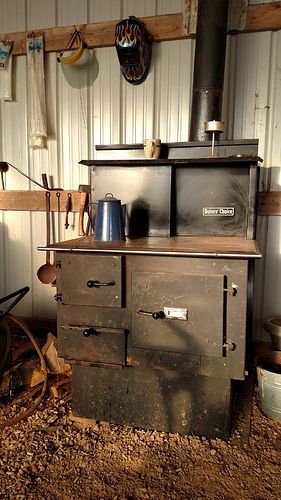I’m on another mini side-project.
Over on my V-10 thread a couple of weeks ago, I posted some pics of rendering lard from pig fat. That worked great, and was really easy to do.
So, I thought with all of these wood ashes around here, I might try making some soap.
And the next step in that is making the lye (KOH - Potassium Hydroxide).
In addition to use in soap making, lye is handy as drain cleaner, degreaser, and even as electrolyte for those super-capacitors that are being discussed on another thread, and in the manufacture of bio-diesel.
The main ingredient in making lye is hardwood ashes. Certain kinds are preferred (oak, apple, etc.) but just about any kind will do. For my source of ashes, I am just using the ashes produced in this Baker’s Choice wood cookstove, since I pretty much exclusively burn good quality hardwood in it.

